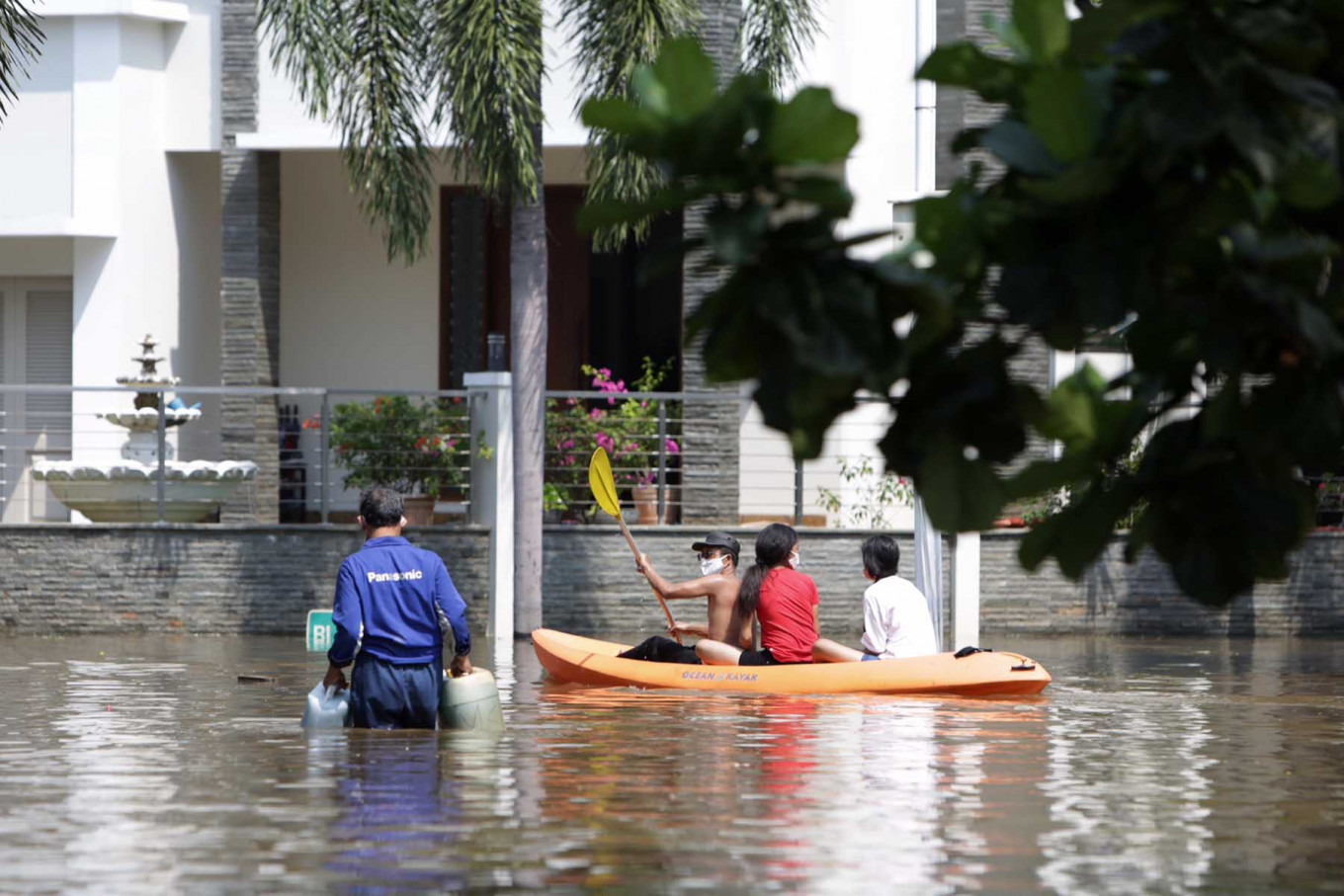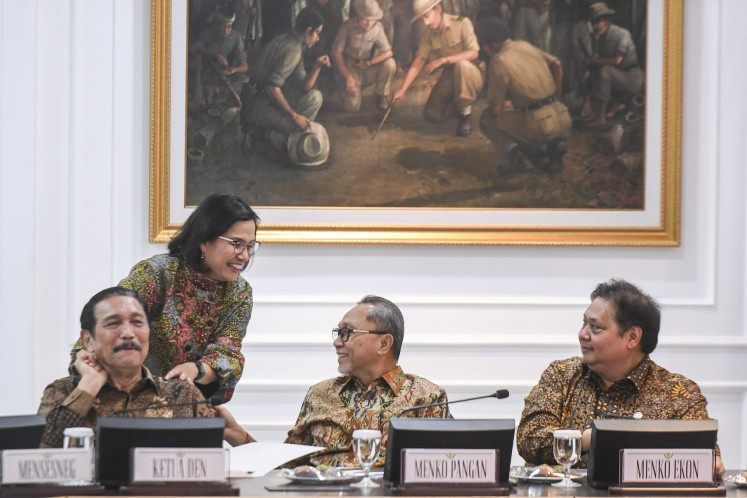A flood-free Jakarta?
But infrastructure development and strengthening is only part of the concerted measures needed to relieve Jakarta from flooding.
Change text size
Gift Premium Articles
to Anyone

D
espite various preventive measures, flooding continues to plague the city, which is still struggling with the pandemic. On Friday floods inundated houses in 57 neighborhood units, displacing nearly 700 people, who are now at risk of not only the usual ailments associated with flooding like diarrhea but also transmission of the life-threatening COVID-19.
The National Disaster Mitigation Agency (BNPB) said almost all of the flood-stricken neighborhood units were located in the Cipinang Melayu area in East Jakarta, where the Cipinang River, one of 13 rivers that dissect the capital, flows to Jakarta Bay. People living on and around the river banks are prone to falling victim to flooding, especially with the arrival of the rainy season.
Friday’s flooding and inundation took place after heavy downpours in Greater Jakarta. Floodwaters deluged more than 50 neighborhood units in Cipinang Melayu to a depth of between 40 and 150 centimeters. In many areas, particularly those where infrastructure projects are underway, the heavy rains inundated roads, causing traffic congestion.
The scale of the most recent floods is certainly far lighter than the New Year 2020 floods, not to mention the major floods of 2002 and 2007. To a certain extent this fact proves the government has done its flood-mitigation job.
In the past few years the Jakarta administration and the central government have improved flood-control infrastructure including dykes, canals and dams. The city administration has also regularly dredged rivers and restored their natural functions through normalization, or as Jakarta Governor Anies Baswedan prefers to describe them, naturalization programs.
While the city administration has revitalized the existing dams, the central government has prepared the construction of the Ciawi and Sukamahi dams, both in West Java, which are expected to support Jakarta’s flood-control system. The Jakarta administration has allocated over Rp 1 trillion (US$71.07 million) this year for acquisition of land to be used for the flood-control projects.
The city’s efforts at improving flood-control infrastructure will be further put to test as the La Nina weather phenomenon, which can trigger extreme downpours, is predicted to last until the end of this month, although previous forecasts suggested that the weather anomaly could continue until April.
But infrastructure development and strengthening is only part of the concerted measures needed to relieve Jakarta from flooding. Environmentalists have repeatedly called on the government to address the problem by befriending nature.
Scientists have long advised that the city government restore Jakarta’s water catchment areas and realize its plan to allocate 30 percent of the city’s territory for open green space. As of today the green space only accounts for less than 10 percent.
Jakarta cannot solve floods alone, especially because all the rivers that flow through the city come from neighboring West Java, which is why the role of the central government is more crucial than ever. The problem has worsened over time partly as a result of the conversion of land in upstream areas that are beyond the Jakarta administration’s control.
Whatever plans Jakarta officials have in mind to improve flood mitigation will amount to little if they cannot work with their neighbors.









